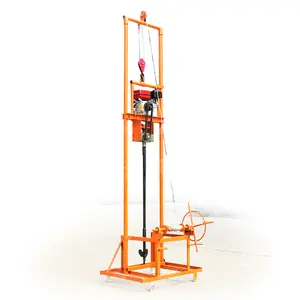Popular in your industry













































































Related Searches:


























































































































Top categories
About injection grouting packers
When it comes to injection grouting packers, it's crucial to understand the packers' function in construction. These packers play a vital role in injecting grout into structures, like concrete walls, to fill cracks and voids. The process ensures structural integrity, waterproofing, and overall stability. Injection grouting packers are designed to withstand high pressures during grouting operations. Various materials, such as steel or plastic, are used to manufacture these packers, with the choice being dependent on factors like the grouting pressure, type of grout used, and the specific application. Additionally, the packers' design often incorporates features like threaded connections for secure attachment, check valves to control grout flow, and flanges for easy removal after the grouting process is completed.
Types of Injection Grouting Packers
There are several types of grouting packers available, each catering to specific requirements in construction and infrastructure projects. The mechanical packer for grouting is a widely used type, relying on a threaded rod mechanism to expand and create a tight seal within the drill hole. This packer offers ease of installation and is suitable for various injection grouting applications.
Another type is the fixed-flange packer, featuring a fixed flange at one end that prevents the packer from being pushed further into the drill hole. This design is advantageous when a specific depth of grout penetration is desired. A hollow-stem packer incorporates a hollow tube that allows grout to flow through the packer, facilitating injection in situations where direct access to the drill hole is needed. Furthermore, the ball-injector packer is equipped with a ball check valve that opens under pressure, enabling the grout to be injected into the target area. Lastly, the port collar packer is designed with multiple injection ports along its length, providing flexibility in distributing grout within the structure.
Applications of Injection Grouting Packers
Injection grouting packers are extensively used in various construction projects, serving as a reliable solution for addressing issues related to cracks, leaks, and structural repairs. In the realm of civil engineering, these packers are instrumental in rehabilitating and strengthening infrastructure elements like bridges, tunnels, and dams. They play a critical role in mitigating water ingress and enhancing the overall performance and durability of these structures. Moreover, the maintenance of buildings and other architectural elements often involves the use of packers for injection grouting to tackle leakage problems and restore the integrity of the construction. This is particularly important in scenarios where traditional repair methods are not effective or where targeted injection of grout is necessary.
Advantages of Injection Grouting Packers
The use of injection grouting packers offers several advantages that contribute to their widespread adoption in the construction industry. Their ability to precisely deliver grout to targeted areas ensures efficient crack filling and void sealing, minimizing material wastage and optimizing the repair process. Additionally, the versatility of these packers, as highlighted by the availability of various types and sizes, makes them suitable for a wide range of applications, from residential waterproofing to large-scale infrastructure projects. This adaptability enhances the packers' usability across different construction scenarios. Moreover, the durability and strength of materials used in manufacturing, such as cement grouting packers, contribute to their resilience against high grouting pressures, ensuring effective and long-lasting structural repairs. Lastly, the ease of installation and removal of injection grouting packers minimizes downtime and labor requirements, streamlining the repair and rehabilitation processes.



























